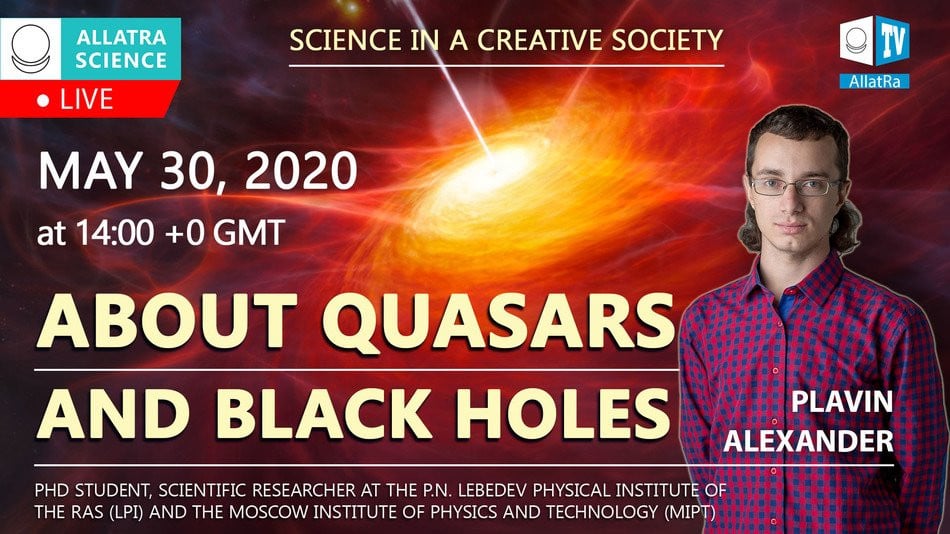In the program "Science in a creative society" scientist Alexander Plavin, a post-graduate student and researcher from the Lebedev Physical Institute of the Russian Academy of Sciences and the Moscow Institute of physics and technology.
What does science know about quasars?
These are quasi-stellar objects or they are also called QSOS (which means a source of radio waves similar to a star). Quasars emit as much energy as a single galaxy, such as the milky way. Scientists assume that inside quasars are located incredible volumes of black holes. The luminosity of quasars exceeds that of trillions of Suns. The mass of supermassive black holes that are located inside these objects exceeds billions of times the mass of the Sun. Quasars can be born through the phase of a neutron star. In addition, it is interesting that an electrically neutral elementary particle neutrino is formed in the nuclei of active galaxies during radio emission.
In the report "PRIMORDIAL ALLATRA PHYSICS" there is a section dedicated to neutrinos. This information can change the idea of science about the structure of elementary particles.
Neutrinos travel through the Universe and penetrate any objects without interacting with them. They are fixed on the Ground with special devices. Scientists set up an experiment and determined that neutrinos come from superluminal quasars. Radio astronomy instruments have helped identify where neutrinos come from. The data obtained at the ice Cube neutrino Observatory was compared with radio astronomy data. The results surprised not only astronomy enthusiasts, but also scientists.
Methods for studying quasars
Alexander Plavin spoke about the methods of studying quasars, about the variety of quasars, as well as about the physics of unknown processes.
Why is the spectrum of infrared displacement inherent in quasars and what does this mean? Can quasars be used for navigation in space?
Of particular interest are inexplicable phenomena associated with ancient quasars.
A quasar that is 13.1 billion years old. There are still 12.9 billion. It existed as early as 690 million years after the Big Bang was supposed by scientists. By human standards, this is the age of 2.5 years. This period in the history of the Universe is called the "age of reionization".
Scientists tend to think that quasars are accretion disks of supermassive black holes:
how could such supermassive black holes have formed at the initial stage of the Universe's formation;
what matter accumulates near the horizon of black holes, how quasar jets are arranged and what their function is.
The book "Allatra" reveals the structure of astronomical objects and their main characteristics, including black holes.
Unexplained phenomena with the heaviest quasars, groups of quasars
The fact that there are groups of quasars violates the Basic Cosmological Principle. When we look at the Universe on a large scale, we realize that it will look exactly the same, regardless of the point and direction of observation. Based on these principles of modern cosmological theory, astrophysicists have calculated that there should be no objects larger than 1.2 billion light-years in the Universe. Despite this, the recently discovered LQG group. It has a complex elongated shape, with a width of about 1.7 billion light years. At the same time, the length of this group is 4 billion light years.
Is space tourism a fantasy or a reality? Radio astronomy is a young promising science that has made a number of advances in a short time of its existence, ahead of optical astronomy. The latest intellectual developments will allow you to make complex calculations in seconds in the future. You can learn about quantum computers and artificial consciousness from the program with the participation of I. M. Danilov "XP NRG: World's first creators of artificial consciousness".
Write to us: [email protected]

